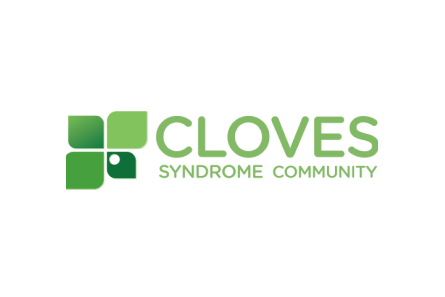CLOVES Syndrome Community
Cycle 1
CLOVES Syndrome stands for Congenital, Lipomatous, Overgrowth, Vascular Malformations, Epidermal Nevi and Spinal/Skeletal Anomalies and/or Scoliosis. CLOVES is caused by a somatic genetic mutation in a gene called PIK3CA that increases the activity of the gene. CLOVES belongs to a category of diseases known as PIK3CA-related overgrowth spectrum or PROS.
Last updated 04/30/2025
Clinical
Disease Class
Congenital, progressive multi-system disease
Developmental anomalies during embryogenesis
Genetic diseases
Body Systems
Cardiovascular / Circulatory
Digestive
Endocrine
Hematopoietic / Lymphatic / Immune
Metabolic
Muscular / Skeletal
Nervous / Sensory
Renal / Urinary / Excretory
Reproductive
Respiratory
Organs
Arteries
Blood
Blood vessels (veins, arteries)
Bones
Brain
Connective tissue / joints
Ears
Esophagus
Heart
Intestines
Kidneys
Liver
Lungs
Lymph fluid, nodes, ducts, vessels
Mouth / teeth
Muscles
Nose
Pancreas
Scrotum
Skin
Spinal cord
Stomach
Throat/pharynx
Veins
Known Genetic Link
Yes, one or more genes directly cause the condition
causative_genes
PIK3CA
contributory_genes
None specified / unknown
Type of Inheritance
De novo
Newborn Screening
No
Disease Mechanism(s)
Abnormal cell proliferation
Pathogenic mutation
Age of Onset
Infancy (age 0-1)
Prebirth
Average Age at Diagnosis
Early childhood (age 1+-5)
Infancy (age 0-1)
Life Expectancy
Adulthood (age 18-64)
Affected Sex(es)
Female
Intersex
Male
National Prevalence
101-1000
Global Prevalence
1001-10000
National Incidence
Unknown
Global Incidence
Unknown
Symptoms / Phenotypes
asymmetric body parts
capillary malformation
cranial hyperostosis
infection, unspecified location
lipoma
lymphatic malformations
macrodactyly
muscle weakness
overgrowth of extremities
paralysis
pulmonary embolism
renal hypoplasia/aplasia
sandal gap
seizures / epilepsy
spinal dysraphism
tethered cord
venous malformation
Biomarkers
Diagnostic
· Somatic PIK3CA mutation from tissue from overgrown areas of body
Existing Therapies
FDA-Approved to Cure or Modify the Disease
· Vijoice (aka: alpelisib/PIQRAY)
Off-Label Drug Use
Organizational & Research
Cell Lines
Fibroblasts
iPSCs
Cell Lines, Institution
University of Edinburgh
Cell Lines, Involvement
Consulted
Funded
Cell Lines, share
Unsure
Disease Model
Mouse
Zebrafish
Disease Model, Involvement
Consulted
Funded
Disease Model, share
Unsure
Clinical Trial Role
Other consulting
Recruitment and outreach, patients
Recruitment and outreach, trial sites/physicians
Biobank, Institution
None
Center of Excellence, Institution
None
Registry
Yes, we have a registry that we created
Data Collected, Registry
Genetic data
Longitudinal natural history data
Medication usage
Patient contact info
Patient-reported data
Data Entered by, Registry
Patients
Platform, Registry
IAMRARE
Natural History Study
Yes, we have a natural history study that we created
Data Collected, Natural History Study
Genetic data
Imaging data
Medication usage
Patient-reported outcomes
Retrospective data
Platform, Natural History Study
IAMRARE
FDA Patient Listening Session
No
FDA Patient-Focused Drug Development (PFDD) Program
No
ICD Codes
We use an ICD-10 code capturing the family of diseases to which our disease belongs
We use an ICD-11 code capturing the family of diseases to which our disease belongs
Diagnostic Guidelines
Yes, we have guidance available on our website
Yes, we have accredited guidelines
Science Advisory Board Policies
Yes, willing to share SAB policies
Research Network Policies
Has CRN but no policies
Research Roadmap
Yes we have a Research Roadmap, and will share policies
International Chapters
None
International Partners
None
